Stunning Aerial View Of The Karnak Temple
MessageToEagle.com – This is a partial aerial view of the Karnak Temple, Luxor, Egypt. Karnak is one of the largest temple complexes in the world. This magnificent place has incredibly rich architectural, ritual, religious, economic, social and political history
The temple of Karnak was known as Ipet-isu-or “most select of places”-by the ancient Egyptians. It is a city of temples built over 2,000 years and dedicated to the Theban triad of Amun-Ra, Mut, and Khonsu. This derelict place is still capable of overshadowing many wonders of the modern world and in its day must have been awe-inspiring.
For the largely uneducated ancient Egyptian population, this could only have been the place of the gods. According to some sources, this the largest religious building ever made. It covers about 200 acres (1.5 km by 0.8 km), and was a place of pilgrimage for nearly 2,000 years. The area of the sacred enclosure of Amun alone is sixty-one acres and could hold ten average European cathedrals. The great temple at the heart of Karnak is so big that St Peter’s, Milan, and Notre Dame Cathedrals would fit within its walls.
The sacred barges of the Theban Triad once floated on the lake during the annual Opet festival. The lake was surrounded by storerooms and living quarters for the priests, along with an aviary for aquatic birds.
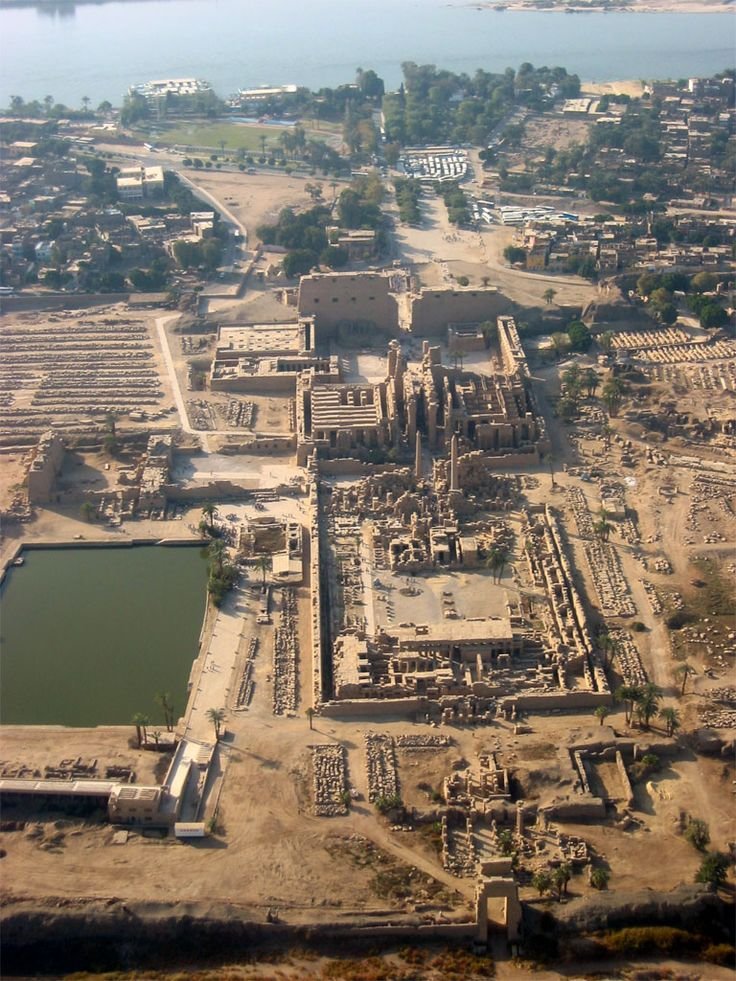
The Egyptians believed that towards the end of annual agricultural cycle the gods and the earth became exhausted and required a fresh input of energy from the chaotic energy of the cosmos.
To accomplish this magical regeneration the Opet festival was held yearly at Karnak and Luxor. It lasted for twenty-seven days and was also a celebration of the link between the pharaoh and the god Amun. The procession began at Karnak and ended at Luxor Temple, one and a half miles (2.4 kilometres) to the south.
The statue of the god Amun was bathed with holy water, dressed in fine linen, and adorned in gold and silver jewelry. The priests then placed the god in a shrine and onto the ceremonial barque supported by poles for carrying. Pharaoh emerged from the temple, his priests carrying the barque on their shoulders, and together they moved into the crowded streets. A troop of Nubian soldiers serving as guards beat their drums, and musicians accompanied the priests in song as incense filled the air.
Copyright © MessageToeagle.com All rights reserved. This material may not be published, broadcast, rewritten or redistributed in whole or part without the express written permission of MessageToeagle.com
Related Posts
-
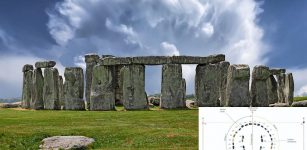 Stonehenge Served As An Ancient Solar Calendar And We Know How It Worked – Scientists Say
No Comments | Mar 5, 2022
Stonehenge Served As An Ancient Solar Calendar And We Know How It Worked – Scientists Say
No Comments | Mar 5, 2022 -
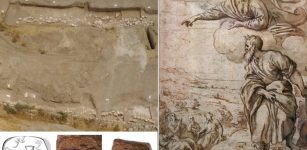 Biblical City In Zanoah Offers Archaeological Evidence Of Moses’ Journey To The Promised Land
No Comments | Jul 22, 2024
Biblical City In Zanoah Offers Archaeological Evidence Of Moses’ Journey To The Promised Land
No Comments | Jul 22, 2024 -
 Bezvodovka: Little Known Ancient Solar Observatory In Ukraine Reveals Its Secrets
No Comments | Jan 4, 2017
Bezvodovka: Little Known Ancient Solar Observatory In Ukraine Reveals Its Secrets
No Comments | Jan 4, 2017 -
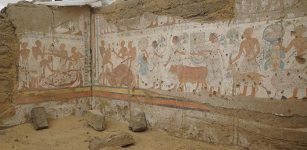 Tomb Of Pharaoh Ramesses II Treasurer Ptah-M-Wia Discovered In Saqqara
No Comments | Nov 5, 2021
Tomb Of Pharaoh Ramesses II Treasurer Ptah-M-Wia Discovered In Saqqara
No Comments | Nov 5, 2021 -
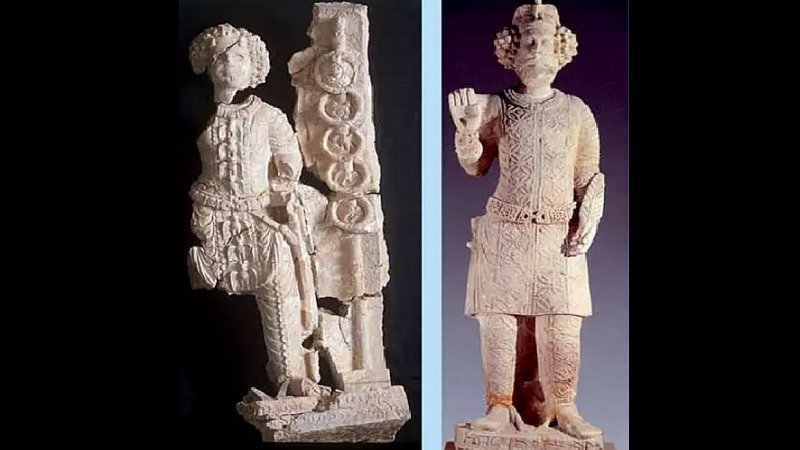 Hatra: Ancient Powerful Caravan City That Could Withstand Invading Roman Armies
No Comments | Dec 13, 2020
Hatra: Ancient Powerful Caravan City That Could Withstand Invading Roman Armies
No Comments | Dec 13, 2020 -
 Edfu Texts Reveal Secrets Of Predynastic Egypt And Zep Tepi
No Comments | May 29, 2021
Edfu Texts Reveal Secrets Of Predynastic Egypt And Zep Tepi
No Comments | May 29, 2021 -
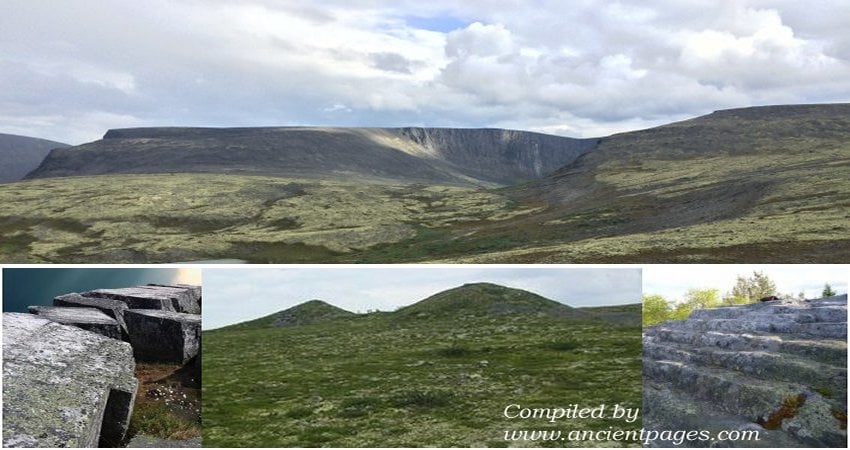 Mysterious Kola Pyramids Built By An Unknown Lost Ancient Civilization Can Rewrite Ancient History
No Comments | Aug 4, 2020
Mysterious Kola Pyramids Built By An Unknown Lost Ancient Civilization Can Rewrite Ancient History
No Comments | Aug 4, 2020 -
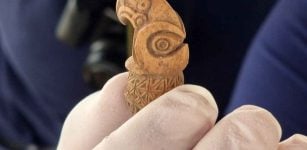 Rare 2,500-Year-Old Scythian Bone Sceptre Discovered In Bulgaria
No Comments | Oct 7, 2023
Rare 2,500-Year-Old Scythian Bone Sceptre Discovered In Bulgaria
No Comments | Oct 7, 2023 -
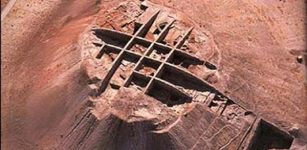 Norsuntepe – Little-Known Mysterious Prehistoric Site In Anatolia, Turkey: Why Was It Abandoned And Destroyed By Fire?
No Comments | Mar 13, 2014
Norsuntepe – Little-Known Mysterious Prehistoric Site In Anatolia, Turkey: Why Was It Abandoned And Destroyed By Fire?
No Comments | Mar 13, 2014 -
 New Insight Into Genetic History And Social Structures In Neolithic And Bronze Age Croatia
No Comments | Aug 18, 2021
New Insight Into Genetic History And Social Structures In Neolithic And Bronze Age Croatia
No Comments | Aug 18, 2021
